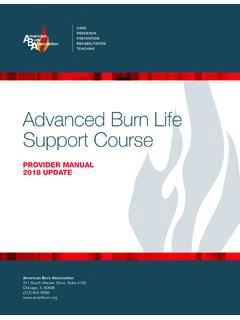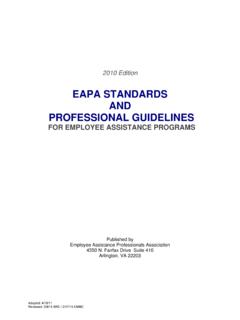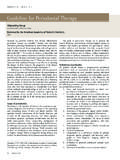Transcription of Courtesy of the American Burn Association Advanced Burn ...
1 Courtesy of the American burn Association Advanced burn Life Support (ABLS). Learn more about the ABA and ABLS at burn Center referral Criteria Severity Determination First Degree (Partial Thickness). A burn center may treat adults, children, or both. Superficial, red, sometimes painful. burn injuries that should be referred to a burn Second Degree (Partial Thickness). center include: Skin may be red, blistered, swollen. Very painful. 1. Partial thickness burns greater than 10% total body surface area (TBSA). Third Degree (Full Thickness). 2. Burns that involve the face, hands, feet, genitalia, Whitish, charred or translucent, no perineum, or major joints.
2 Pin prick sensation in burned area. 3. Third degree burns in any age group. 4. Electrical burns, including lightning injury. 5. Chemical burns. Percentage Total Body 6. Inhalation injury. 7. burn injury in patients with preexisting medical Surface Area (TBSA). disorders that could complicate management, prolong recovery, or affect mortality. 8. Any patient with burns and concomitant trauma (such as fractures) in which the burn injury poses the greatest risk of morbidity or mortality. In such cases, if the trauma poses the greater immediate risk, the patient may be initially stabilized in a trauma center before being transferred to a burn unit.
3 Physician judgment will be necessary in such situations and should be in concert with the regional medical control plan and triage protocols. 9. Burned children in hospitals without qualified personnel or equipment for the care of children. 10. burn injury in patients who will require special social, emotional, or rehabilitative intervention. Excerpted from Guidelines for the Operation of burn Centers (pp. 79-86), Resources for Optimal Care of the Injured Patient 2006, Committee on Trauma, American College of Surgeons











